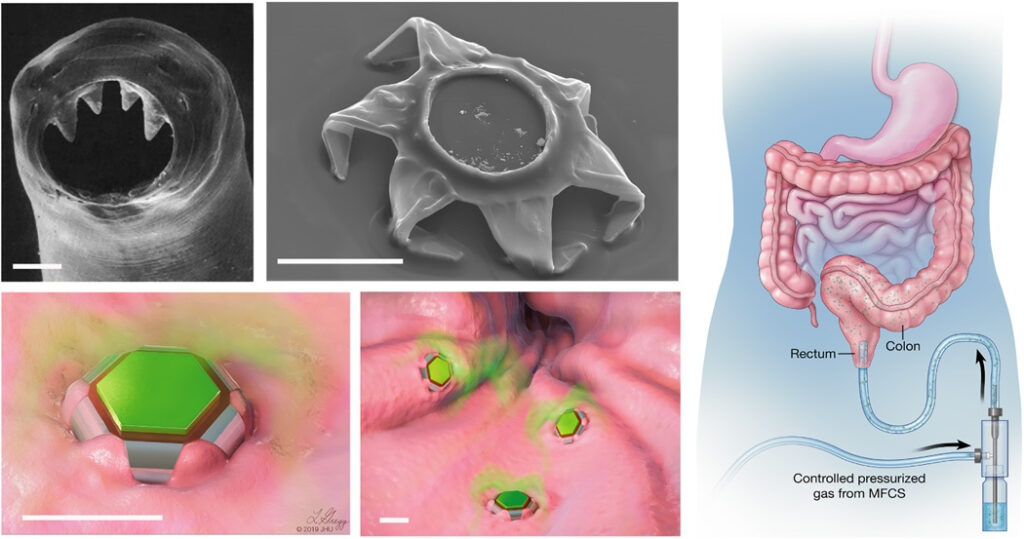Researchers at Johns Hopkins University have developed variable geometry machines to efficiently transport drugs into the gastrointestinal tract
The specific efficient transport of medicines, the so-called drug delivery, is one of the major goals of the researchers. Controlled release of the active ingredient into specific areas of the body makes it possible to administer smaller amounts of medication and avoid unpleasant side effects. The challenge is tough as transporters have to deal with complex and varied conditions within the body. Differences in temperature, acidity and cellular activity risk making the medium inefficient and consequently releasing the drug into unwanted areas.
Researchers at Johns Hopkins University have invented a new transport inspired by parasite worms of the intestinal gastrointestinal tract. The microscopic devises have six appendages similar to small teeth covered with kerosene wax. The surface layer, having reached a certain temperature, destroys itself and allows the teeth to bend and attach firmly to the intestinal mucosa. The change in the shape affects the central part of the device which starts to gradually release the medicine. The devices have been tested on animals, the results can be found in an article published in the journal Science Advances.
“We have seen the introduction of dynamic, microfabricated smart devices that can be controlled by electrical or chemical signals”, says Professor David Garcias, Ph.D,. “But these grippers are so small that batteries, antennas and other components will not fit on them.” Theragrippers, explains Gracias, don’t rely on electricity, wireless signals or external controls. “Instead, they operate like small, compressed springs with a temperature-triggered coating on the devices that releases the stored energy autonomously at body temperature”.
You might also be intereste into -> Pancreatic cancer, new multiple test with microfluids
